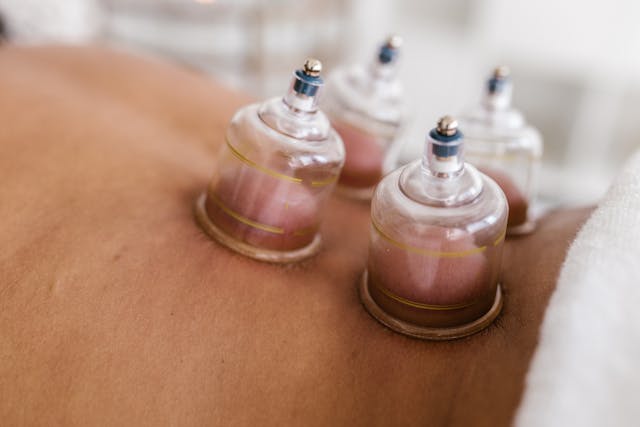Hijama, also known as cupping therapy, is a traditional healing technique that involves placing cups on the skin to create suction. This suction is believed to stimulate blood flow. And improves circulation, and promote healing. It is a popular practice in many cultures, including Islamic and Middle Eastern traditions.
Here are some of the benefits that attribute to hijama:
- Pain relief: It is often used to alleviate pain in various parts of the body. Such as the back, shoulders, and joints.
- Improved circulation: The suction created by the cups is believed to increase blood flow. It can help to improve overall circulation and promote healing.
- Removal of toxins: Some practitioners believe that hijama can help to remove toxins from the body, leading to improved health and well-being.
- Boosting the immune system: By improving circulation and removing toxins, hijama may also help to strengthen the immune system.
- Treating specific conditions: It has been used to treat a variety of conditions. Including headaches, migraines, back pain, arthritis, and respiratory problems.
It is important to consult with a qualified healthcare professional before undergoing any treatment. They can help to determine if hijama is appropriate for you and provide guidance on how to find a reputable practitioner.
Age for Hijama:
While there’s no strict age limit for hijama. It’s generally safe for individuals of most ages. However, it’s advisable to consult with a qualified hijama practitioner, especially for children, the elderly, or those with underlying health conditions.
Hijama Procedure:
- Preparation: The practitioner will cleanse the area and apply a lubricant.
- Cupping: Cups on the skin are heated or a vacuum is created using a pump. This causes the skin to be drawn into the cups.
- Suction: The cups are left in place for a predetermine amount of time. Typically between 5 and 15 minutes.
- Removal: The cups are remove, and the area is clean and bandage if necessary.
Hijama, also known as cupping therapy, is a traditional healing technique that involves placing cups on the skin to create suction. This suction stimulates blood flow, improve circulation, and promote healing. Here’s a breakdown of the hijama procedure:
1. Consultation and Assessment
- A qualified hijama practitioner will conduct a thorough consultation to assess your health history, symptoms, and goals.
- They will identify the specific areas of your body to treat. Based on your condition and traditional hijama practices.
2. Skin Preparation
- The skin is cleanse and prep up with a natural oil or cream to reduce friction and prevent irritation.
3. Cup Application
- The practitioner places the cups on the designated areas of your body and creates a vacuum using suction.
- The cups is place for a few minutes or longer. Depending on the treatment goals.
4. Cupping and Scarification (Optional)
- In some cases, the practitioner may use a small, sterile blade to make tiny incisions in the skin before applying the cups. This is scarification.
- The purpose of scarification is to release toxins and promote healing.
5. Post-Treatment Care
- After the cups removal, the practitioner may apply a natural ointment or salve to the treated areas.
- It’s important to follow the practitioner’s instructions for post-treatment care, which may include avoiding certain activities or foods.
Wet Cupping:
In wet cupping, they make small incisions on the skin before placing the cups. This allows for the release of blood and toxins. Wet cupping is best to treat specific conditions, such as blood disorders or chronic pain.
Dry Cupping
Dry cupping is a type of cupping therapy that involves placing heated cups on the skin to create suction. This technique is in practice for centuries in various cultures and it offers numerous health benefits.
Best Hijama Clinics in Karachi:
Finding a reputable hijama center in Karachi is crucial for ensuring a safe and effective experience. Here are some best options in Karachi:
- Bilal Hijama Clinic
- Al-Huda Hijama Center
- AlBaraka Hijama & Herbal Clinic
- Naveed Hijama Center
When choosing a clinic, consider the following factors:
- Experience and Qualifications: Look for practitioners with proper training and certifications.
- Hygiene and Sterilization: Ensure the clinic maintains high standards of cleanliness and sanitation.
- Client Reviews: Read reviews from previous clients to get a sense of their experiences.
- Personalized Approach: A good clinic will tailor the treatment to your specific needs and health conditions.
Stay tuned for more news and updates on Infinite Insight Hub!



